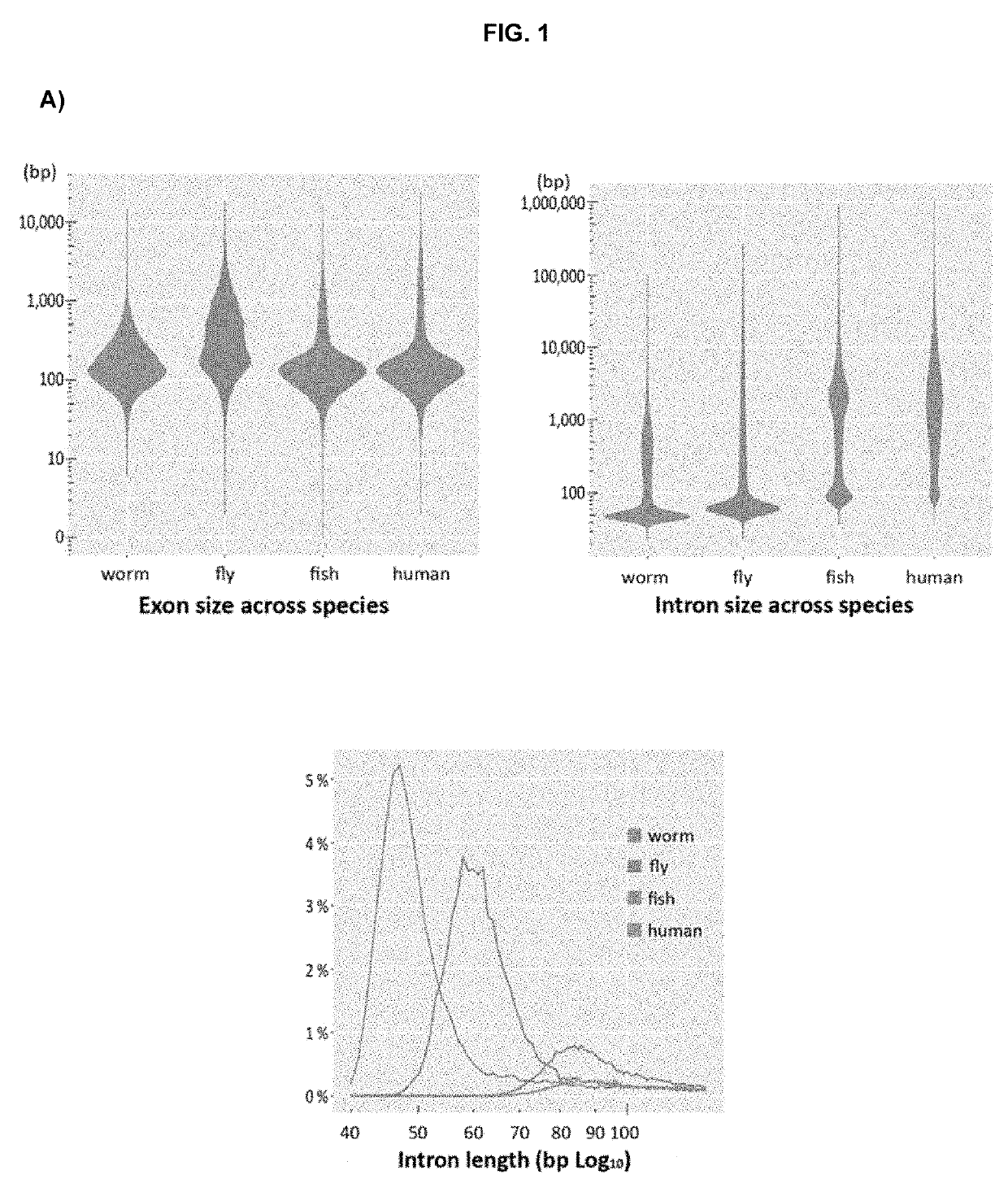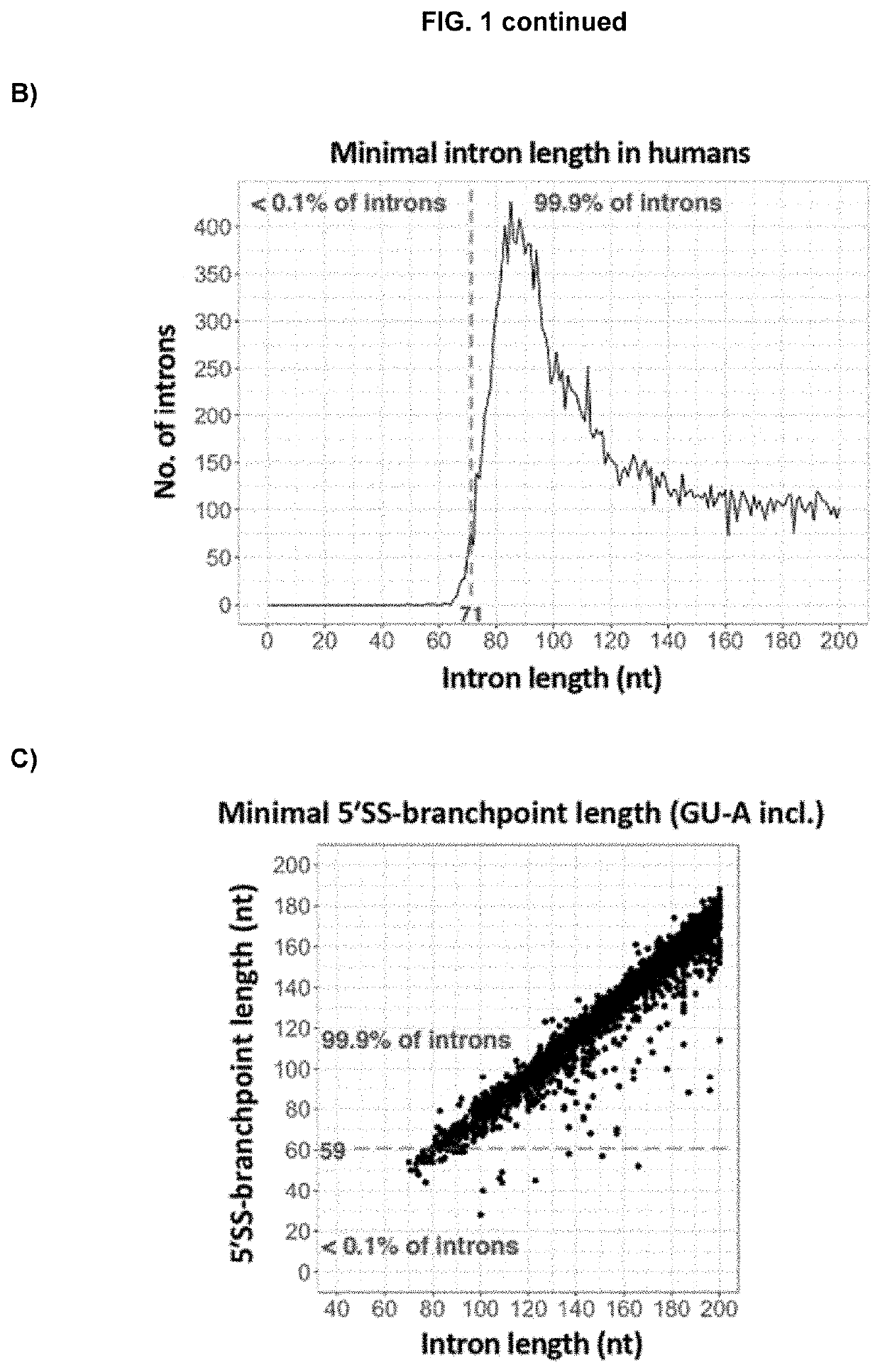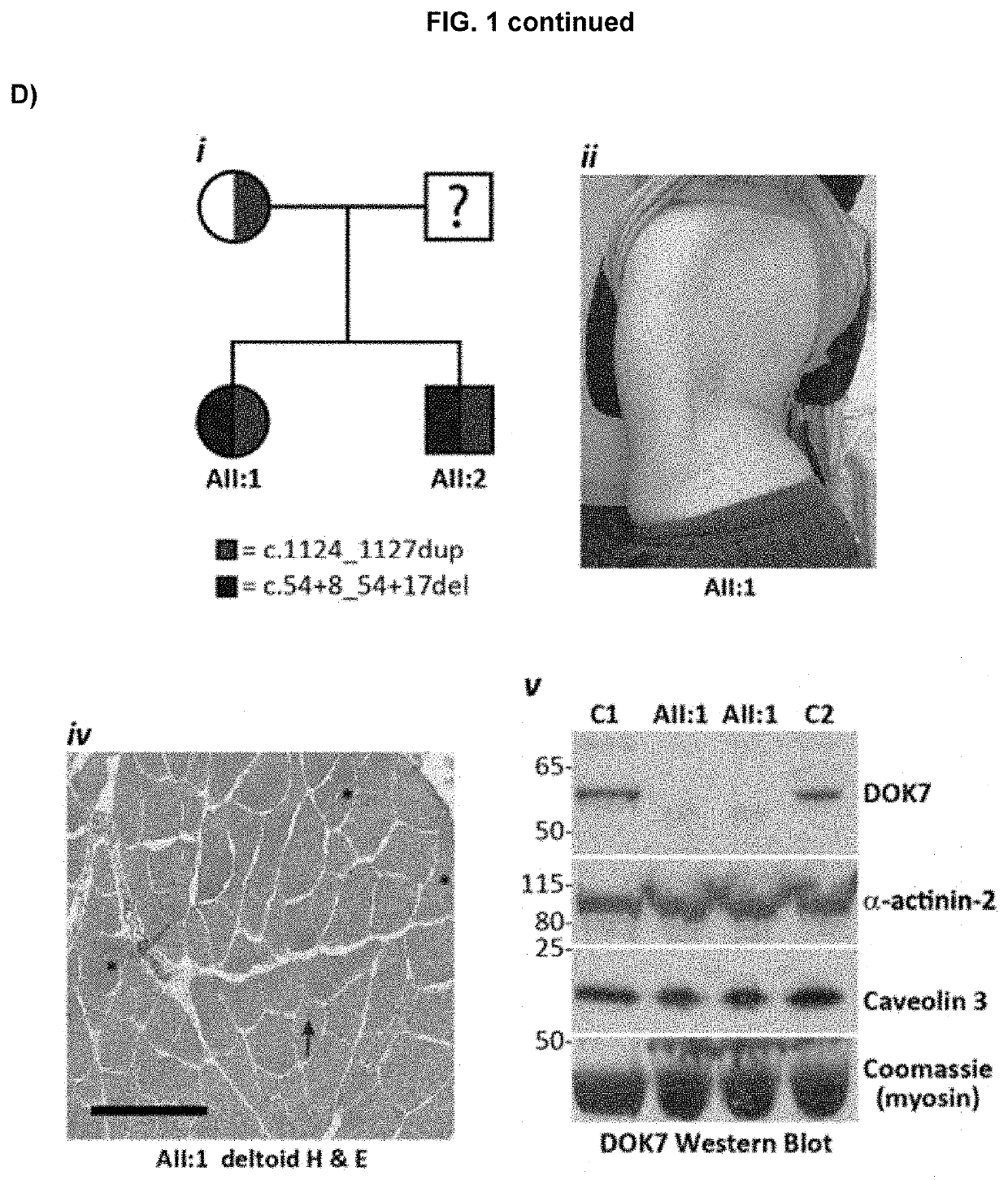Intragenic assessment and methods therefor
- Summary
- Abstract
- Description
- Claims
- Application Information
AI Technical Summary
Benefits of technology
Problems solved by technology
Method used
Image
Examples
examples
Summary:
[0103]Background: Splice variants are a common cause of human genetic disorders, though challenging to identify. Abnormal splicing can be devastating for the encoded protein, inducing a frame-shift or in-frame deletion / insertion of multiple residues. There is great need for improved informatics pipelines to detect and predict splice-altering variants.
[0104]Methods & results: Genomic sequencing identified intronic deletions in EMD (intron-5 reduced from 79 to 56 nucleotides, nt) or DOK7 (intron-1 reduced from 76 to 66 nt), sparing all consensus splice-sites, in two index families with neuromuscular disorders. Normal splicing was abolished in muscle biopsies, with associated deficiency of emerin or DOK7 protein by western blot. The mechanistic basis for abnormal splicing is due to biophysical constraint, whereby the human U1 / U2 spliceosomal machinery is unable to assemble within critically shortened introns, stalling in A complexes. Restoration of 5′ splice-site to branchpoint...
PUM
| Property | Measurement | Unit |
|---|---|---|
| Distance | aaaaa | aaaaa |
Abstract
Description
Claims
Application Information
 Login to View More
Login to View More - R&D
- Intellectual Property
- Life Sciences
- Materials
- Tech Scout
- Unparalleled Data Quality
- Higher Quality Content
- 60% Fewer Hallucinations
Browse by: Latest US Patents, China's latest patents, Technical Efficacy Thesaurus, Application Domain, Technology Topic, Popular Technical Reports.
© 2025 PatSnap. All rights reserved.Legal|Privacy policy|Modern Slavery Act Transparency Statement|Sitemap|About US| Contact US: help@patsnap.com



